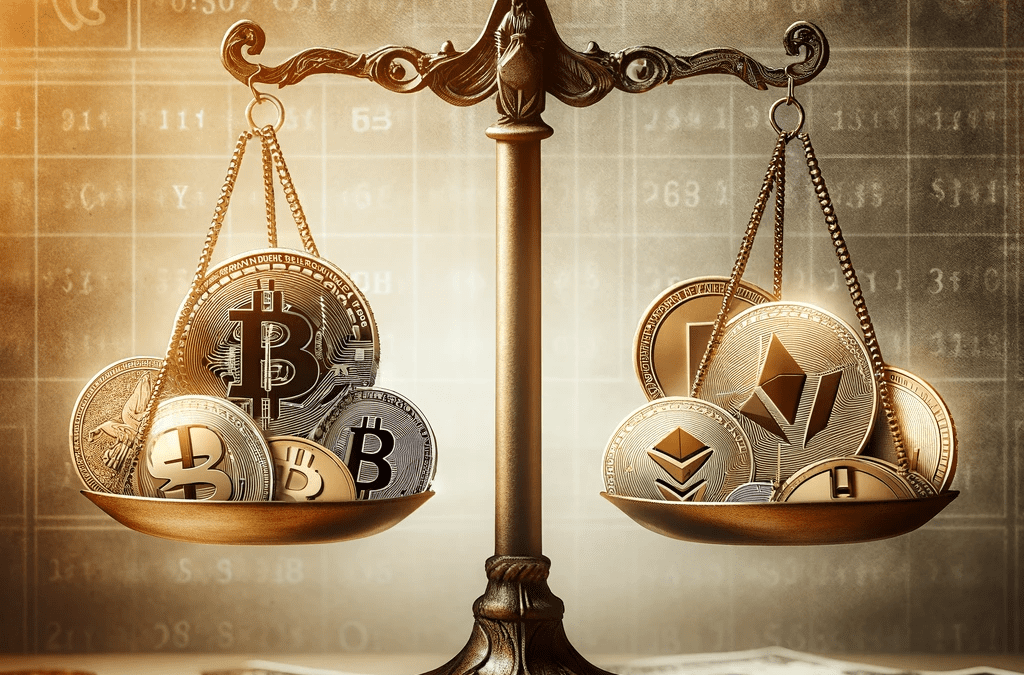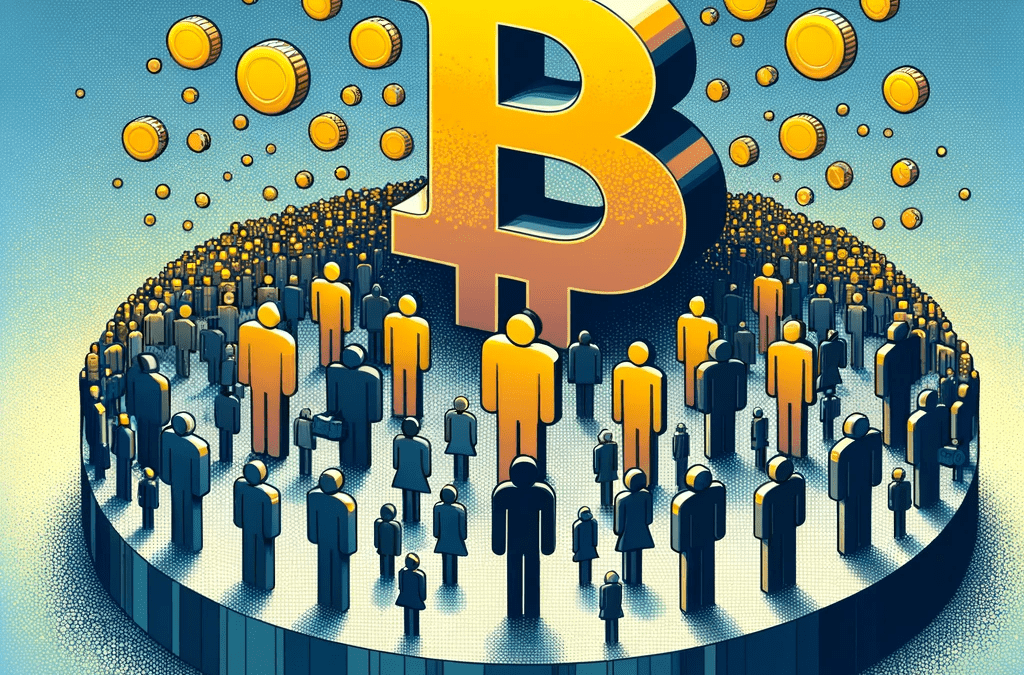CBDC vs Cryptocurrency? CBDC Meaning & What is Decentralised Digital Currency?
CBDCs (Central Bank Digital Currencies) explained and our opinion on what the outcome of a CBDC vs crypto battle would look like.CBDC vs Cryptocurrency? CBDC Meaning & What is Decentralised Digital Currency?
Editor’s Note: Updates made on 9th June 2022 to fix CBDCs abbreviations. Further amends made on 22.08.22 to provide reference links and expand on CBDC meaning and what is a decentralised digital currency.
When it comes to Bitcoin and cryptocurrency, we frequently hear the statement “we are still early” from followers and proponents of the space. We hear it from both miners and investors alike. The news of El Salvador announcing that BTC would be recognised as legal tender was a big step for Bitcoin, proving that it, and other cryptocurrencies, continue to have a future as both a store of value and a utility.
With most of us cheering on the adoption of crypto, some are wondering is this the same as a decentralised digital currency and what are CBDCs (Central Bank Digital Currencies)? In this guide, we will go back to basics and explore some of the most common questions relating to CBDCs, cryptocurrencies and digital currencies in general, including:
- CBDC meaning
- What is digital currency?
- Will we ever see a digital pound in the UK?
- What are stablecoins and are these the same as a digital dollar?
- Are CBDC & crypto the same?
- Fiat currency vs cryptocurrency
- Digital currency vs cryptocurrency
- Key differences between CBDC & Bitcoin

Bitcoin and other cryptocurrencies could exist alongside a CBDC — Photo by DrawKit Illustrations on Unsplash
CBDC meaning and government-backed CBDCs
CBD meaning: A CBDC is a digital currency that is produced, backed and controlled by central banks.
This currency wouldn’t be in any way physical like the currency that we’re used to. Instead, it would only exist digitally. This currency would also be ‘pegged’ to fiat currency in order to provide stability.
For some investors new to the space, government-backed CBDCs may sound like a good thing as they are pushing forward the concept of digital currencies and consequently cryptocurrency.
Removing the need for carrying around physical cash could also be seen as a big positive. However, there are some key differences between CBDCs and cryptocurrencies such as Bitcoin. We will dive into this more a bit later in the blog.
What is digital currency?
Digital currency, sometimes called electronic currency, is a form of money or currency that is stored and managed digitally via computers and exchanged via the internet.
Due to the fact that these currencies aren’t physical, transactions can be made quickly and securely without the cost associated with distributing and creating physical coins and notes.
Digital currency can be centralised (as with CBDCs) or decentralised (as with most cryptocurrencies). This is the key difference between these two forms of digital currency. So when you hear talk of a digital dollar or a digital pound, this is typically within the context of these currencies being government-backed CBDCs.
Will we ever see a digital pound in the UK?
The UK’s Chancellor of the Exchequer, Rishi Sunak, has spoken at length about CBDCs globally and the potential for a UK digital pound. Last year, Rishi Sunak announced a joint task force between the Treasury and the Bank of England. This task force will be set up to explore the concept of CBDCs and consider their potential for use within the UK.
Rishi Sunak talks about CBDCs and their potential within the UK
If implemented, a digital pound would coexist alongside the physical fiat currency that we are all familiar with. Other countries such as China have been working on their digital currency since as early as 2014. China has been leading the way when it comes to digital payments, to the extent that physical cash is fast becoming a thing of the past for many consumers.

We can expect the topic of CBDCs to be discussed further in parliament — Photo by Shane Rounce on Unsplash
It seems like a UK digital pound is inevitable, and just a matter of time. Realistically, it will be another few years before we see anything implemented as a digital currency backed by central banks.
What are stablecoins? Are these a decentralised digital currency?
It’s useful to mention this as a stablecoin is another digital cryptocurrency that has a fixed value or ‘pegged’ to another asset or currency.
Stablecoins, as the name suggests, are more stable than most other cryptocurrencies due to the stable asset that they are tied to. The reason for this link is to create a cryptocurrency that is stable enough to use reliably for transactions, without the price volatility that comes with many other cryptocurrencies.
Stablecoins are sometimes confused with a digital dollar, especially as many of them go by similar names such as USDT, USDC or BUSD. However, these are not the same as a government-backed ‘digital dollar’.
A digital dollar would be backed by the federal reserve directly and would be centralised. A stablecoin operates as a cryptocurrency which isn’t regulated, whereas a digital dollar would be.
So generally speaking, you can think of stablecoins as being a decentralised digital currency whereas CBDCs are fully centralised.
Are CBDC & crypto the same?
At first glance, it may be easy to think of CBDCs and crypto as being very similar.
However, there are some huge differences between them both:
CBDCs are centralised
As alluded to above, CBDCs are centralised meaning that they would be monitored, controlled, and fully regulated. CBDCs would be privately maintained and regulated, allowing for direct control over the fundamental way that the currency works, including the supply of that currency.
Bitcoin is a decentralised digital currency
Bitcoin is most definitely a decentralised digital currency as it has no centralised governing authority. The Bitcoin network works via a peer-to-peer type technology meaning there are no central servers and the public ledger is distributed to all of the machines on the network. The question of whether Bitcoin is actually viable as a form of currency in the real-world is a question for another day.
Crypto and CBDC could both use blockchain technologies
Some countries have suggested that their CBDC will use blockchain technology in a similar way to cryptocurrencies. However, so far, these seem to be using a distributed database with one central authority. This has muddied the water leading some to believe that CBDCs are similar to crypto, whereas, in fact, they are fundamentally different.
Let’s look at fiat currency vs cryptocurrency
We have referred to the term ‘fiat currency’ above and in other guides on our site.
Let’s take a look at what this is and how fiat compares to cryptocurrencies.
Fiat currency, much like CBDCs, is a currency that is government-backed and is not pegged or tied to a commodity such as gold. Cryptocurrency on the other hand is secured by cryptography, meaning it is almost impossible to hack, or fall victim to counterfeiting. For more on this, please read our ‘cryptocurrency vs fiat currency’ article here.

Physical cash isn’t going away anytime soon — Photo by Sarah Agnew on Unsplash
Anonymity
Certain types of cryptocurrency such as Monero also allow for complete anonymity. Monero is decentralised, but also uses stealth addresses and ring signatures which doesn’t reveal or store any information about the transaction.
Value, money printing vs fixed supply and inflation
The value of fiat and crypto is derived in very different ways. With fiat currency, the value is based on the relationship between supply and demand rather than the value of an underlying commodity.
The printing of money is controlled by the central banks or governments. The actual amount printed is also decided by the respective government or central bank. One big problem with this is that if too much is printed, it can lead to hyperinflation.
With cryptocurrencies such as Bitcoin, the supply is fixed meaning that there will only ever be 21 million Bitcoin created. Bitcoin runs on a decentralised network that rewards the validating of transactions with small amounts of Bitcoin called Satoshis. These payments come from the transaction fees of other users on the network. The rewards are reduced every 4 years with what is called a Bitcoin halving. Bitcoin’s value comes from its fixed supply and increasing demand. Bitcoin is considered deflationary, making it a great option for investors looking for a hedge against inflation.
Intermediaries
With fiat currency, an intermediary is also needed in order to complete a transaction. These transactions can sometimes take a few days — particularly if it is an international transaction for large amounts of money. With Bitcoin, no intermediary is required and payments are almost immediate.

Decentralised cryptocurrencies are powered by blockchain technology. Photo by Shubham Dhage on Unsplash
Government control
This lack of government control and ability to transact freely without relying on an intermediary is what gives Bitcoin and other cryptocurrencies part of their appeal and consequently their value. It gives individuals the freedom to effectively become their own bank without the control and limitations imposed by a central authority.
Key differences between CBDC & Bitcoin
We’ve outlined the differences between a central bank digital currency and crypto, but let’s be more specific.
Let’s highlight some of the key differences between CBDCs and Bitcoin specifically. This will help us see a potential outcome of the battle between CBDC vs cryptocurrency.
- CBDCs are centralised whereas Bitcoin is a decentralised digital currency
- CBDC supply is determined by banks whereas Bitcoin has a fixed 21 million supply
- CBDC transactions require an intermediary in order to function. Bitcoin does not
- Unlike CBDCs, you have full control of your Bitcoin, and where it can be stored
- Bitcoin transactions work globally without delays, or any additional fees
Why are some people concerned about CBDCs?
CBDCs and crypto are different, we’ve established that, but why do people worry about CBDCs? Let’s start with the way these central bank digital currencies work.
Effectively CBDCs are fiat currencies running on a centralised system meaning they can be fully controlled. Initially, this would mean controlling supply and regulation, but eventually could lead to even more control.
Worries over the loss of freedoms and civil liberties
The pandemic has taught us a lot about how people react in these extreme situations, but it has also taught us about government control. The lengths to which governments will go to in order to keep others safe occasionally means the loss of freedoms and civil liberties.
Through the pandemic we were unable to see loved ones, friends, or even attend funerals in some cases. This was due to measures put in place by the government in order to stop the spread of Covid-19. This meant that we lost freedoms, albeit temporarily, in order to keep us all safe.
With this in mind, it isn’t too much of a stretch to imagine a future where CBDCs are commonplace and there is a shortage of a certain food or item in a supermarket. An advanced CBDC could actually limit the amount of an item we were able to purchase and even blacklist certain items.
Controls that could be imposed by CBDCs
These are just a few examples of the controls that we could see imposed with CBDCs:
- stop you from exceeding your carbon footprint limit,
- stop you from buying certain quantities of a certain item,
- or even stop you from spending at all if you are wanted by law enforcement.
Some people may even think that this is a good idea, stopping people from exceeding what they need and helping to cut off the financing of criminals. However, the concern is more about the precedent being set and the slippery slope we could find ourselves on once things start moving in this direction.
Lack of privacy
Another problem that comes with CBDCs is privacy (or lack thereof).
As well as having all of our browsing habits and location data sold to advertisers, we could now be giving even more information away, this time to governments.
Systems that are able to track where we’ve been and what we’ve been buying would all be adding to somewhat of a dystopian infrastructure where we can all be tracked and controlled. This may sound like the stuff of conspiracy, but if the pandemic has taught us anything, it’s that governments aren’t exactly infallible.
We are, bit by bit, losing the right to privacy as we rely on more and more digital services and infrastructures. This is why we have seen VPN services skyrocket in popularity, not because people are doing anything wrong, but because they value their privacy.
“Arguing that you don’t care about the right to privacy because you have nothing to hide is no different than saying you don’t care about free speech because you have nothing to say.”
CBDCs would be another tool in the government’s belt that starts out with what sounds like good intentions. However, the consequences of such tools in reality are detrimental in more ways than they are beneficial.
The future of CBDCs, crypto, and digital payments
Hopefully we have covered the CBDC meaning and notion of a decentralised digital currency in this guide and answered all of your questions. It’s hard to know exactly how things will look in the next decade, but one thing is for sure, digital currencies aren’t going anywhere. The question is whether we’ll see a centralised digital currency or a decentralised one leading the way.
We can expect the battle of the CBDC vs cryptocurrency to heat up in the coming years. We can expect more negative news and general attacks on crypto in the media. We can expect more news focusing on how crypto is anonymous and can fund terrorism or drug trafficking.
In contrast, we will continue to see a narrative that puts CBDCs in a positive light, being ‘more stable’ and ‘better for the environment’ than Bitcoin and crypto in general.
The environmental impact of Bitcoin is certainly something to think about and is another topic in its own right. This is because a lot of politicians are put-off by the footprint left by miners.
However, it is important to take said footprint within the correct context. Galaxy Digital for example released a report comparing the energy usage of Bitcoin to the banking system and gold industry. This report found that banking and gold use around 263.72 TWh and 240.61 TWh per year, while Bitcoin uses 113.89 TWh per year.
There certainly will be CBDCs in the coming years, but Bitcoin and other cryptocurrencies aren’t going anywhere either. That is, of course, unless forms of regulation imposed by governments and central banks make Bitcoin inaccessible to users.
As CBDCs will function the same way as fiat currency in terms of how it’s managed, we can expect the same type of problems to plague a future centralised CBDC such as inflation.
We’ve tried to explore all forms of digital currency in this article in an impartial way, from CBDCs and crypto, to traditional fiat, the digital doller or stablecoins. However, it may be clear which of these we think has the brighter future.
What are your thoughts on digital currencies? Do you think a CBDC will be a good or a bad thing for the country? Please let us know in the comments what you think.
Reference material
Further reading and reference material to help you explore the meaning of CBDs, crypto, Bitcoin, decentralised digital currency and blockchain in more detail:
https://www.investopedia.com/terms/c/cryptocurrency.asp
https://www.investopedia.com/terms/d/decentralizedmarket.asp
https://www.bankofengland.co.uk/research/digital-currencies
https://aws.amazon.com/blockchain/decentralization-in-blockchain/
Last modified on: April 19, 2025
Latest Posts

GPU Mining, ASICs & Decentralisation Explained
IntroductionMining cryptocurrency has become a popular way to participate in the crypto and blockchain space while...

Basic Economics & Cryptocurrency Valuation
Why I've Written This Article? One of the most common, and most frustrating, objections (misconceptions) that I hear...

About CryptosRUs and Into the Cryptoverse
This post exploring CryptosRUs vs Into the Cryptoverse for free crypto advice is a little different to others we...

From Everyday People & General Adoption to the Bitcoin Elites: Who Will Benefit the Most?
IntroductionOn 6th September 2023, we published a massive article titled ‘Detailed Analysis of Projected Bitcoin...
Contact us to order your crypto mining rig today
Address
Opace Ltd t/a Crypto Mining Solutions, Park House, Bristol Rd South, Rubery, Birmingham, West Midlands, B45 9AH. UK
Phone
0845 017 7661

CBDC vs cryptocurrency? Lets just use seashells as currency and call it a day! Neither will be worth anything in the long-run. The only thing that matters is real money and physical assets that can be exchanged, the likes of silver and gold.
I get where you are coming from and it’s not an unpopular view, I guess it all depends whether you value the technology and ideology behind crypto projects like Bitcoin and Ethereum. They serve totally different purposes and have value in their own rights, but Bitcoin was created to solve the current money/currency situation and issues associated with fiat and is considered to be incredibly valuable by investors small and large who value it’s scarcity and decentralised nature.
CBDCs have the potential to enhance financial stability, reduce transaction costs and drive economic growth. Its important to weigh the benefits before jumping to conclusions.
CBDCs actually have the potential to enhance financial stability, reduce transaction costs, and foster economic growth. Its important to weigh the benefits before jumping to conclusions. #consideralloptions
All good comments but the risks with CBDCs are that they are just another way for governments to control money, including what we can spend, where and how. They will most likely also be subject to “money printing” and inflation.